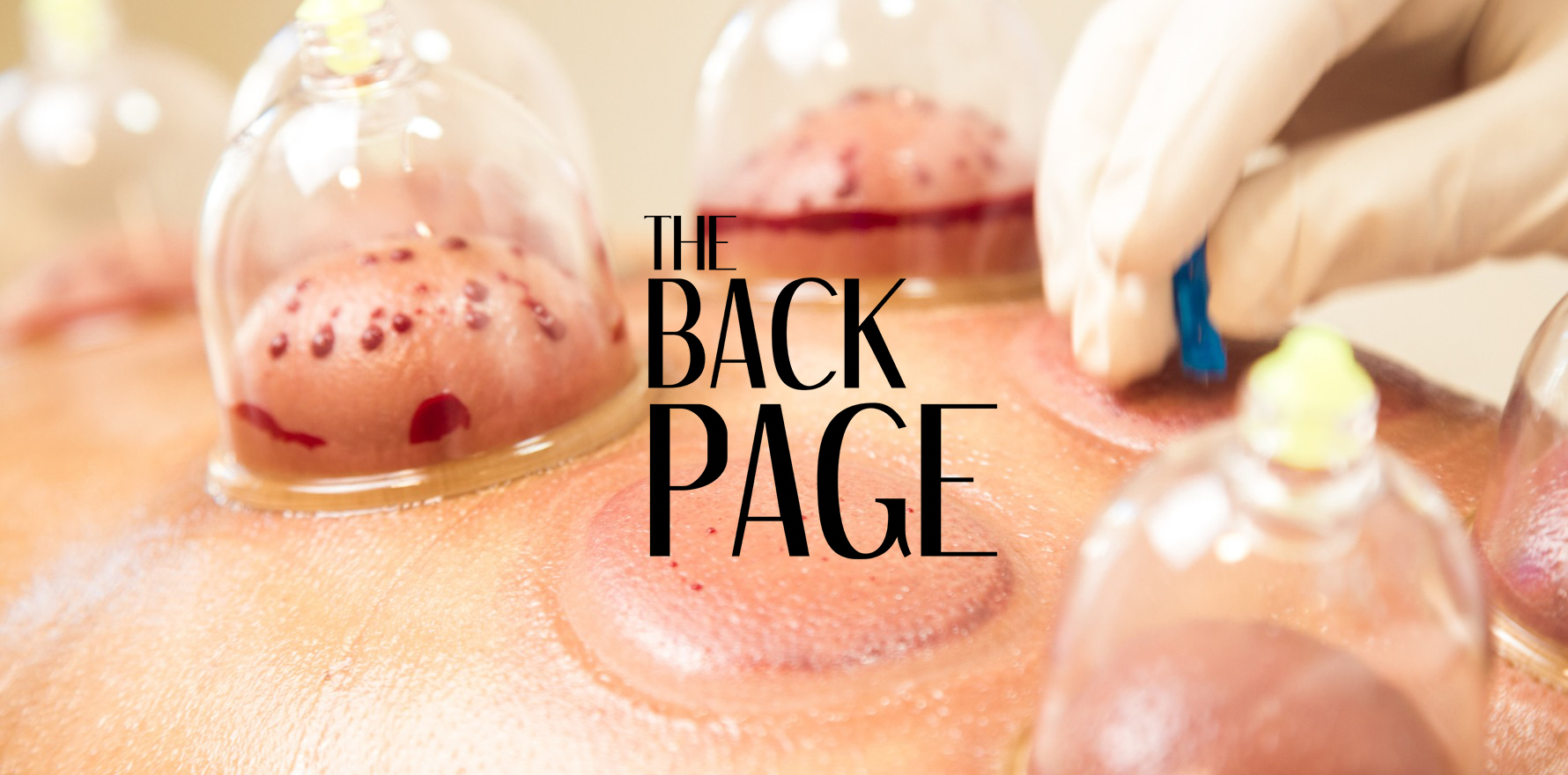Gwyneth Paltrow has been right all along.
Being neither a Hollywood A-lister nor an Olympic swimmer, your Back Page correspondent has not fallen prey to the type of ailment that leads one to seek out cupping.
This practice, yet another healing technique with little but its antiquity to recommend it, involves creating a vacuum in a small cup using a flame and applying it to the skin. Sometimes more air is sucked out through the cup. The negative pressure brings blood cells to the surface where they form a bruise reminiscent of a bad adolescent kissing session – if you’re lucky.
If you’re not lucky you end up looking like this poor bastard.
The mechanism whereby this procedure leaches toxins and other ills from the body is yet to be identified by science, but that didn’t stop the back-hickies look from becoming a red-carpet must-have.
Now a study in rats, published in Science Advances, has shown the merit of using a similar suction technique to achieve DNA/RNA transfection – the delivery of nucleic acids into living cells. The greatest current example of nucleic acid-based medicine is of course covid vaccines.
The authors of the paper outline the difficulties faced achieving transfection: RNA has to be protected against degradation on its way into the cell using a lipid or polymer capsule; DNA transfection is inefficient, and methods to improve efficiency include things called electroporation, the “gene gun” and pressurised delivery of microdroplets, which all have their own drawbacks.
Suction-based cutaneous delivery, however, promises a painless, non-invasive and effective approach, they write.
As a proof of concept, the team took a DNA covid vaccine candidate and gave it to rats as a Mantoux injection, then applied suction to the injection site. This, they report, achieved a startling 100-fold stronger immune response than an injected vaccine alone.
They hypothesise that the strain and subsequent relaxation of the cells is responsible for the uptake, via something called the CG pathway (the clathrin-independent carriers/glycosylphosphotidylinositol-anchored protein enriched compartments endocytotic pathway, to its friends).
The biopharma company behind the study, GeneOne Life Science, has licensed the technique for human trials.
So is this a brilliant way to increase covid vaccine uptake among the woo crowd, or what?
If you see something that gets your chakras in a twist, tell felicity@medicalrepublic.com.au


